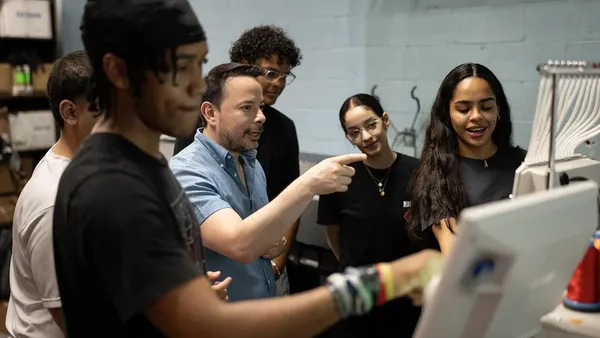Dive Brief:
- Former South Carolina Governor and Clinton-era U.S. Secretary of Education Richard Riley writes for The Hechinger Report that those former political posts gave him a firsthand view of the lack of funding and resources facing rural schools, noting that little has happened to improve those conditions for many.
- During a visit to California's New Tech High School a decade ago, however, Riley witnessed a model that he believes could breathe new life into rural schools — project-based learning for all subjects, putting what students are learning in context with how it works in the real world.
- That model was since implemented in two high-poverty South Carolina schools via a federal grant and a consortium that included the Riley Institute at Furman University, and Riley writes that both are now thriving after previously struggling.
Dive Insight:
Rural schools face significant issues on a number of fronts. Amid the rise in digital testing over the past few years, access (or lack thereof) to reliable broadband in particularly remote areas has gained a significant portion of the spotlight. In these instances, service providers may not yet have even reached the area with local infrastructure, providing a significant hurdle for meeting state deadlines in the digital assessment transition.
And even when there is local infrastructure in place, low-income schools can still stumble when it comes to making sure the network infrastructure in their buildings is upgraded enough to handle the bandwidth demand from students accessing learning resources. On that front, at least, some additional funding is available through the Federal Communications Commission's E-rate program.
But beyond that, these schools also struggle with attracting talented educators who are often more likely to vie for jobs in areas with more going on, especially when it comes to very specific subject areas like coding or computer science. Poverty, especially in areas where local industry has waned in recent years amid the automation or outsourcing of traditional blue collar jobs, can also present a challenge, as educators trying to keep students engaged likely have to contend with the feelings of hopelessness that might come with those conditions.
Adjusting school models to better address and contextualize why students are learning a particular topic or skill and how it can help them overcome those conditions in the long run is certainly part of the solution. But long-term improvement will also require lawmakers to bring new opportunities to the people of these regions. That piece is ultimately out of administrators' ability to control, but they can contribute their voices in efforts to influence that change while becoming driving forces to organize the community on that front.






 Dive Awards
Dive Awards





